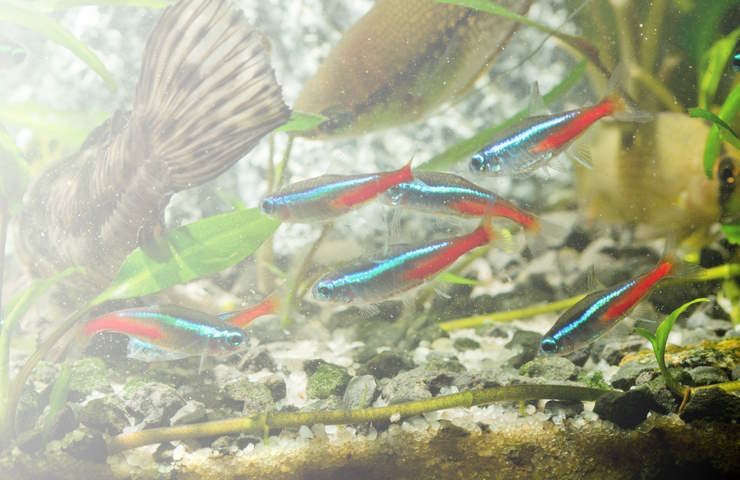Aquarium enthusiasts often encounter the frustrating issue of white or green cloudy water in their fish tanks. Though usually harmless, cloudy water can be unsightly and sometimes potentially harmful to your aquatic friends.

This blog post will explore the causes of cloudy aquarium water, discuss how to diagnose the problem and provide solutions to clear and prevent it.
Why is my aquarium water cloudy?
Cloudy aquarium water can appear in various colors, primarily white or green. Other colors are rare but may occur due to specific water quality issues or the presence of certain organisms.
The primary causes of cloudy aquarium water are:
- Bacteria bloom is the most common reason for white cloudy aquarium water. It often happens after starting a new fish tank or adding new fish. Worry not; these are so-called “beneficial bacteria“; they’re just growing too rapidly.
- Algae bloom causes water to become green or brownishly cloudy. Possible root causes are too many nutrients or too much light.
- Insufficient filtration
- Disturbance of the substrate is another reason for white color clouds in your aquarium. This can also happen after a new tank setup due to insufficient substrate rinsing.
- Decaying organic matter will most likely cause your water to become brown or gray.
To diagnose the cause of cloudy water, ask yourself the following questions:
- Did the cloudiness occur after a water change?
- Is this a newly set up fish tank?
- Have you recently added new fish or decorations?
These questions can help pinpoint the cause and guide you toward the appropriate solution.
How to clear cloudy aquarium water
Clearing cloudy water depends on the root cause. Here are some solutions for common causes:
- Excess nutrients: Perform regular water changes to reduce nutrient levels and consider using a phosphate remover. Reduce the food you provide your fish and ensure proper filtration. Adding live plants can help absorb excess nutrients.
- New tank setup: Cloudiness in a new fish tank is often due to a bacterial bloom during cycling. In this case, be patient and allow the tank to finish cycling. Check our guide on fish tank setup for beginners for more information on establishing a healthy environment.
- Overfeeding: Make sure you are not overfeeding your fish. Provide only the amount of food they can consume in a few minutes. Remove any uneaten food from the tank.
- Insufficient filtration: Ensure your filter is appropriately sized for your tank and clean it regularly. If necessary, upgrade your filter to a more efficient model.
- Disturbance of the substrate: Cloudiness can result from stirring up the substrate during maintenance or rearranging decorations. Allow the tank to settle; the filter will eventually clear the water. Your water may become cloudy again after a partial water change, but the effect will fade over time.
Preventing cloudy aquarium water
Here are some tips to help prevent cloudy water in your aquarium:
- Perform regular water changes and tank maintenance
- Feed your fish an appropriate amount of food
- Ensure proper filtration and circulation
- Place your aquarium in a suitable location (see our aquarium placement tips post)
- Choose the right fish and tank size (see our post on best aquarium fish species for beginners)
Maintaining a healthy aquarium environment is essential for the well-being of your fish. By following these tips and understanding the causes of cloudy water, you can ensure a clear and thriving aquatic habitat for your pets.
Cloudy aquarium water can be frustrating for fish keepers, but with the correct diagnosis and appropriate solutions, you can quickly resolve the problem. Regular maintenance, proper feeding, and efficient filtration are vital in preventing cloudiness and maintaining a healthy aquatic environment.
Leave a Reply